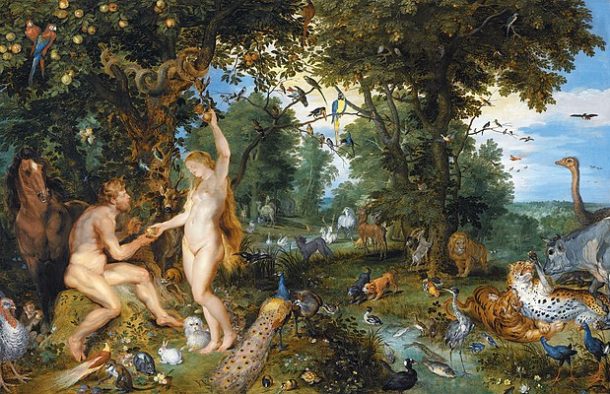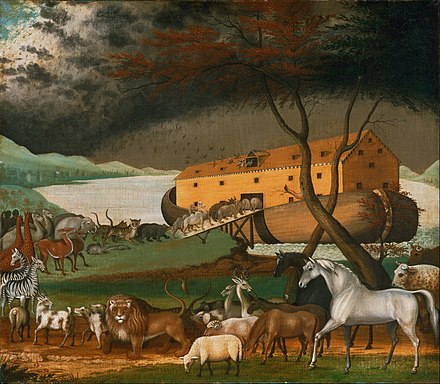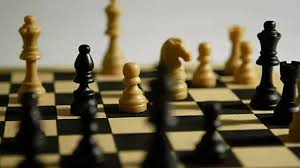When I was a boy, if I needed to look something up (“looking something up” is what they used to call “research”), my go-to source was the encyclopedia. Like many middle-class families at the time, mine had an encyclopedia. Ours was the World Book, and each time I opened a volume I was engulfed by that unmistakable scent of glossy paper. Then it took just a minute for me to be distracted by the articles before or after whatever it was I was supposed to be looking up. If I was holding Volume One, inevitably I’d wind up reading about aardvarks.
After my father died at age 96, I said Goodbye to the family encyclopedia and sent it (and its glossy paper scent) to recycling heaven. Like my father, it had breathed its last breath, the end had come, and the game was over.
These days, my go-to source for information is Wikipedia. I’ve even corrected a few typos and made other small edits over the years. I like Wikipedia and donate a few dollars whenever they ask for a contribution.
So when it came time to speak about Bereshit and there was no encyclopedia within reach, Wikipedia was my first step in the process. Here’s what it has to say about this week’s parashah:
(In the Beginning) God creates the heavens, the world, Adam and Eve, and Sabbath. A serpent convinces Eve, who then invites Adam, to eat the fruit of the tree of the knowledge of good and evil, which God had forbidden to them.

God curses them and expels them from the Garden of Eden. One of their sons, Cain, becomes the first murderer, killing his brother Abel out of jealousy. Adam and Eve have other children, whose descendants populate the Earth.
Each generation becomes more and more degenerate until God decides to destroy humanity. Only one person, Noah, finds God’s favor.

That concise overview was followed by my looking at Bereshit in several of the books still on my shelf, including The Holy Scriptures published by JPS and given to me in November 1959 and inscribed by Ronnie Penn, president of the Wantagh Jewish Center Sisterhood; the 1960 Soncino edition of The Pentateuch and Haftorahs (Complete in One Volume); the 1962 JPS Collector’s Edition (Bound in Genuine Leather); and from 1985, The New JPS Translation Jewish Bible: Tanakh, The Holy Scriptures.
I’m looking again at Bereshit—the highlights. In the Beginning, God creates the heavens and everything that makes up our world. Sadly, it’s not as pristine now as it was then. Adam and Eve had a nice run, but it sadly ended with their expulsion from the Garden of Eden. And then there’s the sad business of Cain and Abel. Being labeled the first murderer in history is not anything to be proud of.
I am also reminded that Noah was the grandson of Methuselah, which sounds to me like the answer to a Trivia question. Noah saved many animals as well as his family, which repopulated the earth.
Now, back to “In the Beginning.”
Beginnings are important. They’ve always been important. Everybody talks about the beginning of whatever is going on.
The start of a new year. The start of a new school year. The start of the Jewish New Year. The beginning of a new job, a move to a new city, and perhaps the beginning of a new relationship. A new marriage. The beginning of another new marriage.
Accomplishments in later life—often depicted as “new beginnings”—are fascinating to many of us. Unlike biblical characters who might have lived to be over 900 years old, most of us just can’t count on reaching that age (although if you’re like me, you’ve probably had days when you feel that old).
Newspapers, magazines, and online articles are filled with accounts of people—famous or obscure, accomplishing something noteworthy in their old age. Actor William Shatner became the first 90-year-old to go into space—actual space, not “the final frontier.” But as a wealthy actor, he could, perhaps, better indulge his fantasies than most of us. Susan B. Anthony was past the age of 80 when she formed the International Woman Suffrage Alliance. Benjamin Franklin was 70 when he signed the Declaration of Independence, and he did not retire from public service until he was 82.
“Grandma Moses” did not start painting until she was 76 years old.
While higher education is most associated with youth, more and more older people are going back and earning degrees. Leo Plass dropped out of college one semester before graduation in 1932 during the Great Depression. He had planned to become a teacher, but instead took a job in the logging industry due to the tough financial times. At age 99, he finally completed his degree. At 95 Nola Ochs, a Kansas woman, earned her Bachelor’s degree and then went on to earn a master’s at the age of 98, all while living in a campus dorm, where she was known as “a real party girl.” (I made that up.)
At 75, Nelson Mandela was elected president of South Africa. On his 80th birthday he married his third wife. Good for him!
Harriette Thompson, a cancer survivor, began running in 1999, and ran her first marathon at age 76. At 91, she became the oldest woman ever to compete in the Suja Rock ‘n’ Roll San Diego Marathon and became the second-oldest marathon runner in U.S. history. She finished the race in 7 hours, 7 minutes, and 42 seconds to break the U.S. record for the fastest time in her age group.
Mount Everest is the tallest mountain in the world and climbing it is a dangerous, grueling undertaking. At age 80, Japanese climber and skier Yuichiro Miura reached the summit and became the oldest person to reach the top. It was his third time reaching the summit and he recently revealed that he would like to try again at 90.
Pretty much everything you do has a beginning, a middle, and an end. You read a book, there’s a beginning, a middle, and an end. You write a book—same thing. You watch a movie or a TV show, play a game, be it Monopoly, Clue, poker, or chess, there’s a beginning, a middle, and an end.
Chess is a good example. Many books have been written and lectures given on chess openings, the Queen’s Gambit being one of the oldest, most reputable, and now thanks to a movie of the same name, probably the most well-known. And I see that there are a few films titled End Game and Endgame.
But while beginnings have remained important to me, and I certainly understand the inevitability of endings (especially as I get older), what I’ve come to realize is often the most interesting or important element is the middle.
The need to understand and master the chess middlegame `(spelled as one word) has inspired many strategies, often named after the master who devised each, as well as instructional manuals, running from fundamental or basic to essential and “complete.” (I also see there is a Sci-Fi novel titled “Middlegame.” Why not?)
Beginnings, middles, and ends…
If you go on a vacation or voyage, enter college for a degree, prepare and eat a dinner, do your morning workout or yoga session, it’s all the same: beginning, middle, end.
Let’s say you decide to walk across America from coast to coast…
As many of you know, I did just that in 2017, not long ago after I’d turned 70. It was a journey that entailed 2,644 miles across 14 states. And while there were many adventures along the way, one thing I can tell you for sure: the beginning and the end were a lot easier than the middle! The first and the last elements were marked by walking into an ocean while making sure I had appropriate photos to document the moment. But the middle entailed starts and stops, good days and bad, small achievements and epic failures, and a lot of tuna foot-longs at Subway.
It was a Beginning and an End, with a lot of walking in the Middle.
In my honest opinion, some of the most important things you’ll ever do in your life have a beginning followed by a crucial middle. Of course there’s always an end. It just might be your own end, but you can’t escape that. So, while many will list the Beginning as the most important element, I propose that that label might be pinned to the Middle.
Let me talk about several activities that have become most important—even vital—in my life since I’ve entered what I refer to as the Final Act.
Years ago I decided to learn Spanish. My motivation started in Cabo San Lucas and involved an embarrassing episode where I made a fool of myself because of a chimichanga. (Well, two chimichangas. But I digress.) For the last 35 or 40 years of my life I’ve studied Spanish occasionally, but picked up the pace when I realized that the pandemic was a real thing and might last for a while. I now spend up to an hour a day reading and listening to Spanish.
Foreign language study for me had a beginning for sure. In fact I remember an elementary school Spanish teacher coming into our classroom for 15 minutes a week. Even as a little kid, I knew Señorita Moskowitz was a bombshell—sleek, sexy, and blonde. And intimidating. (She must be in her 90s by now.) But travel and chimichangas encouraged my study of Spanish, and I’m now in the middle of it. There’s no end in sight. And there’s no goal I’ve set other than to get better at speaking and understanding the language. It doesn’t happen in three weeks, three months, or three decades. It’s a lifelong, middle endeavor.
As most of you are aware, I’m a musician. I’ve played the piano my whole life, and dabbled in guitar and bass years ago. In my early forties, I began to study the saxophone, and there were many who actually believed I could play it. That led to the flute, which is often considered a “double” for reed players, and I played that instrument for maybe 10 years, until I decided that what I really wanted to play was the trombone. When I was getting my degree in music in my fifties, I composed pieces for many instruments I’d never even held in my hand; the trombone was one of them.
I like to tell the story about how at a reception after a jazz band concert where I’d been playing keyboard I told two trombonists in the band that I’d be interested in learning to play the horn. They looked at each other, then at me, and then one of them sadly declared, “You’re really too old to take up the trombone.” I was 32 at the time. So I waited until I was 72, and have been working on the trombone now for five years. By the way, if you’ve ever had a cat or dog, playing the trombone is like bringing a giraffe into the house.
I’m not sure if it’s easier or harder to start new activities when you’re older. I’ve never had much success convincing my older contemporaries to try new things. So be it.
I like learning Spanish and playing the trombone, even though I wouldn’t say I’m very good at either. Regardless, there’s a beginning and a middle; but the only “end” would be if I decided to quit, and I have no intention of doing so any time soon.
A third activity I indulge in is exercise. I’ve made it a part of my daily routine. And although that routine has changed through the decades, I typically put in 20 to 60 minutes each day working out at home or walking with friends. Virtually all of us did some kind of physical activity when we were young, and many of us continued doing so through our middle years. Then life, an illness, or a pandemic, often got in the way and a lot of people never got back on the horse. Everything I’ve ever read about exercise in later years says that it’s good a thing. So I do it. (By the way, having a gym membership is not the same as exercise.)
The fourth pillar of my Strategy for Daily Living is writing. Many of us write, and I have quite a number of friends who have written books, poetry, songs, blog posts, and articles. Writing on a consistent basis is more challenging, though.
Do you write in a journal, or send hand-written letters to friends and family? I do. I’ve written or co-written three books and hundreds of essays. Each book, letter, or essay has a beginning, a middle, and an end, but the process of writing has no end.
I’ve read through the Torah more than once, and years ago it became clear that although the stories can be exciting, romantic, or even hopeful, they often end badly. We all know that, and yet we often find meaning, life-lessons, inspiration, and comfort in them, regardless of the tragedies and promises unfulfilled. That’s why we’ve continued to hold fast to the Torah as we’ve done for thousands of years.

The beginning of each tale can be challenging, dramatic, and exciting, and the end is typically decisive, emotional, and by definition climactic. But it’s the middle that gets you from the start to the finish.
That said, today’s parashah would have been a lot less compelling if it started out, In the Middle, God created…
(Note: This essay was originally presented at Temple Sinai, Oakland, California, during a service on October 14, 2023.)
